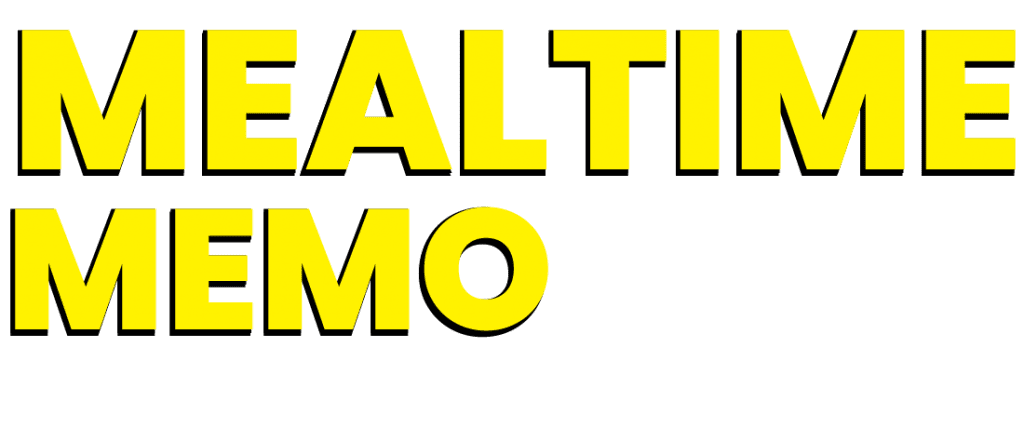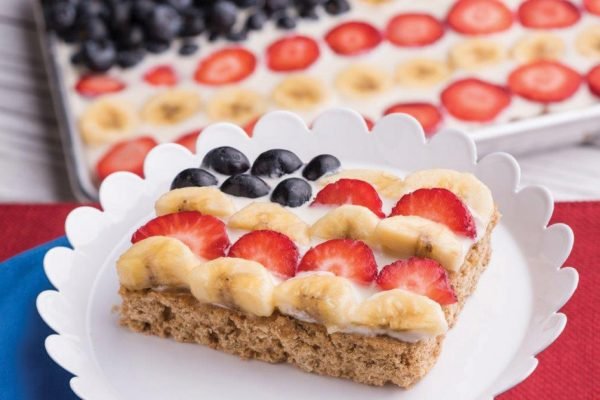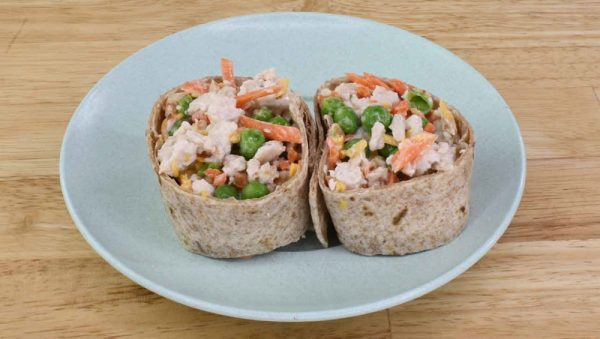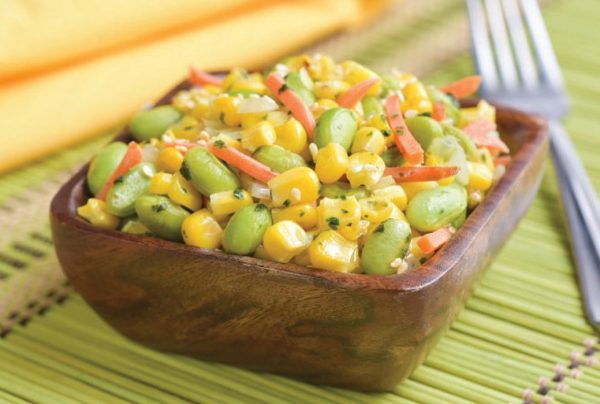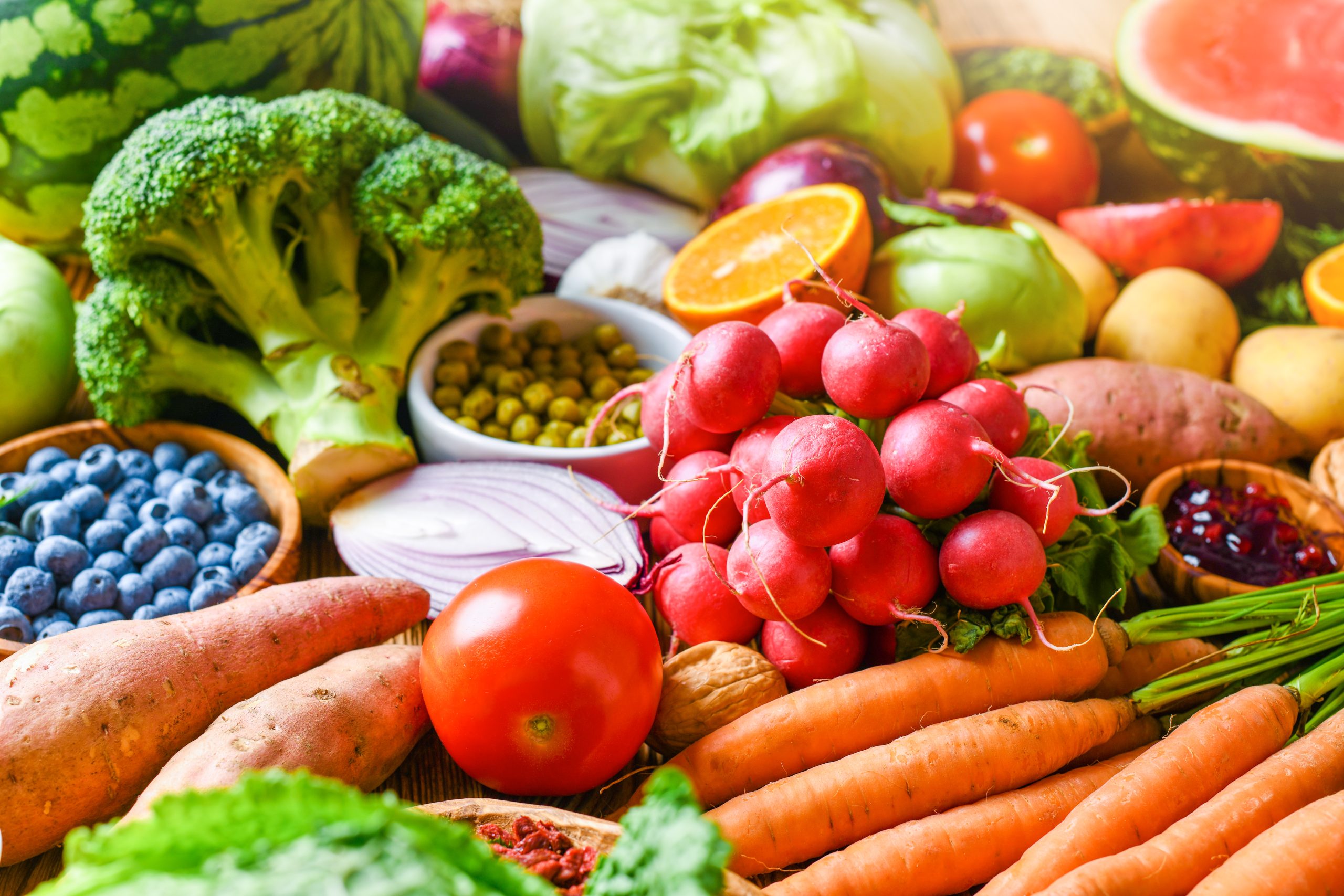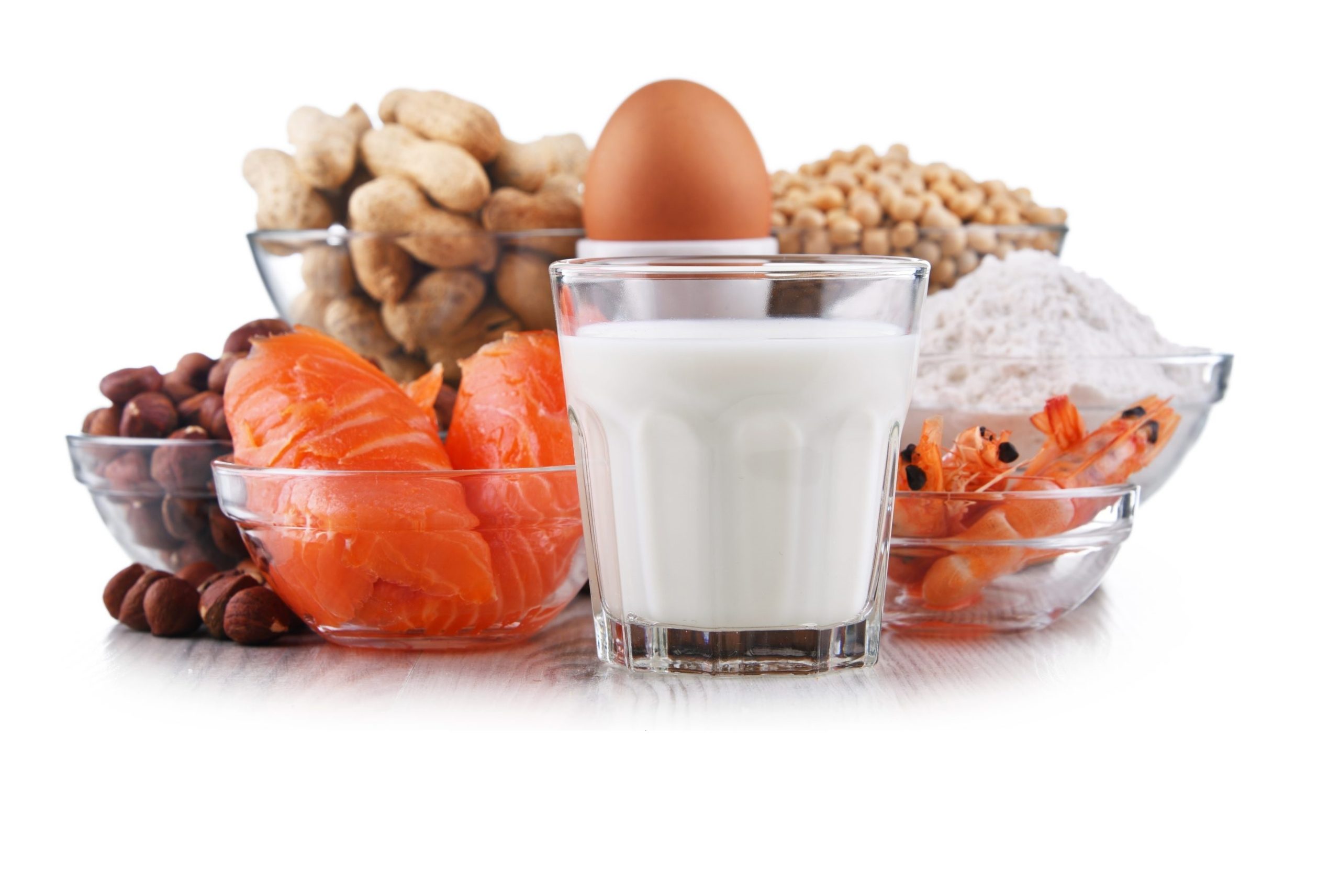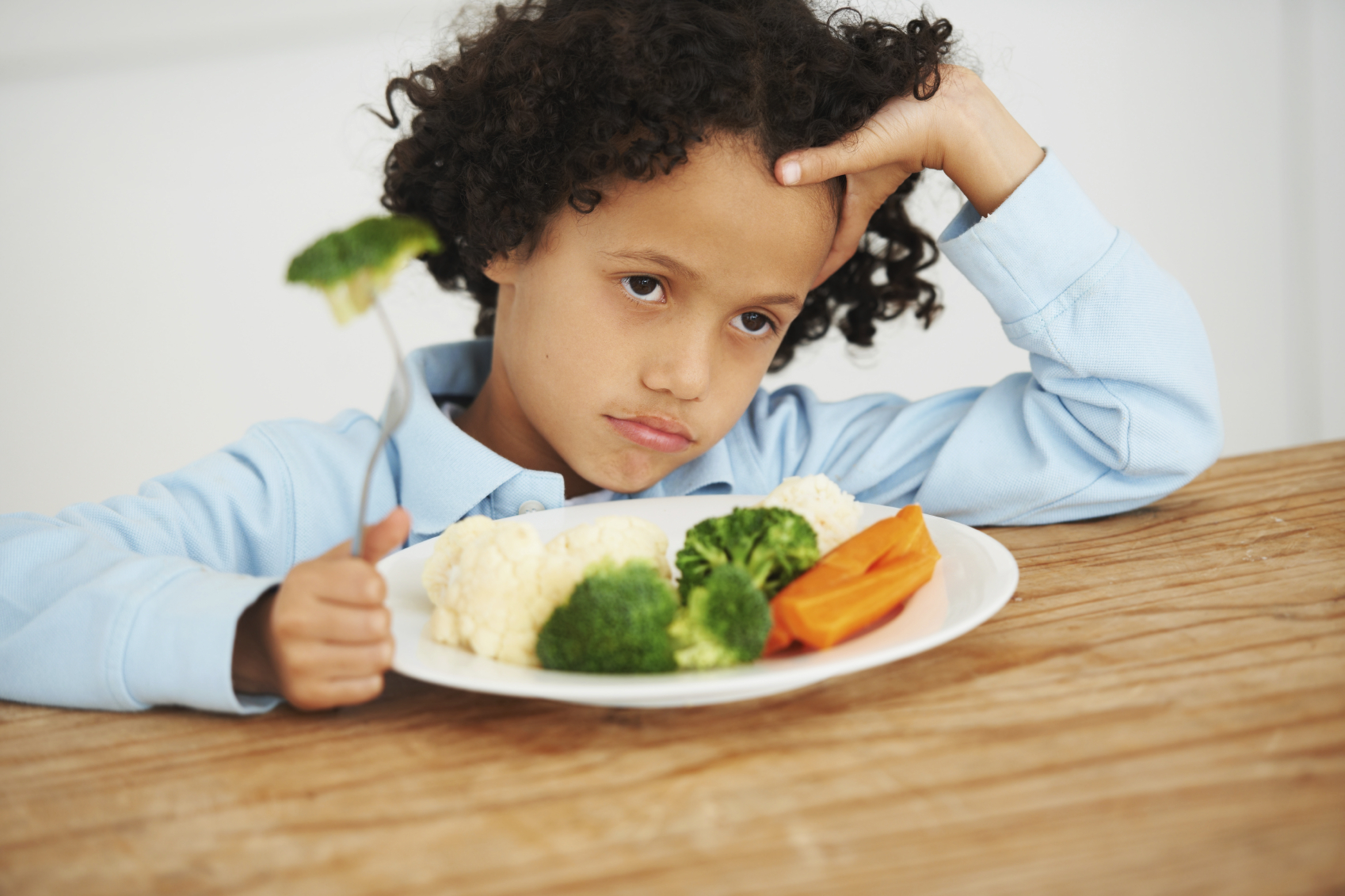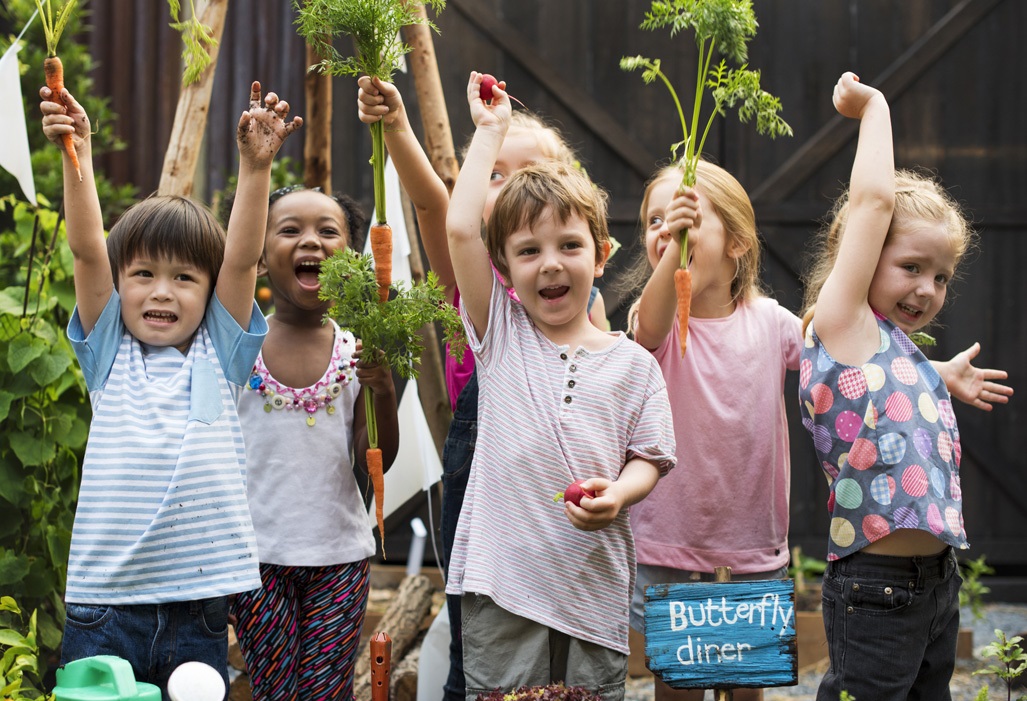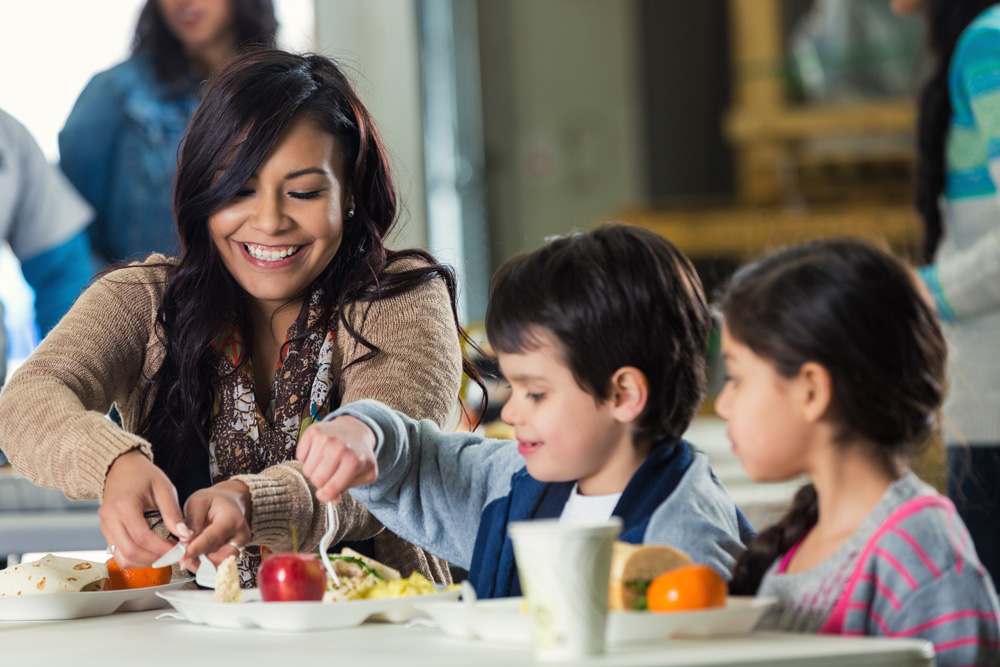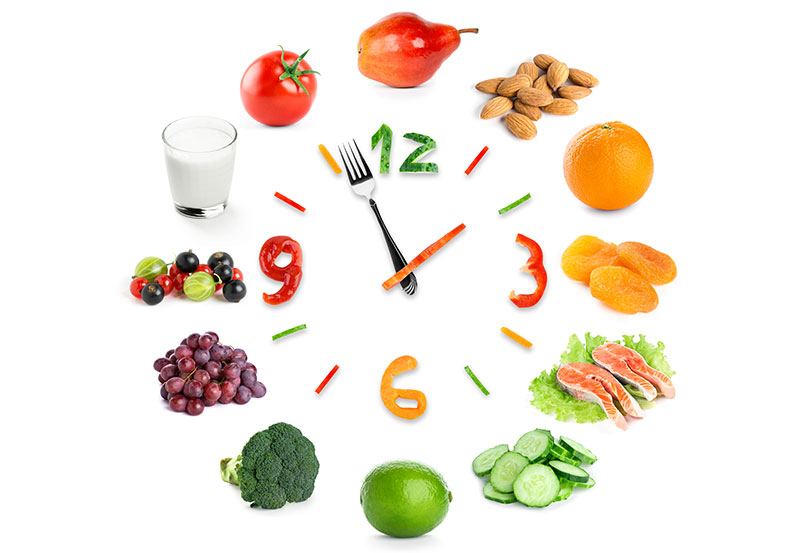
Positive Role Models
Child care professionals model nutritious eating and positive attitudes about food. While sitting at the table with the children in your care:
- Discuss the foods and ask questions about where the food came from, what it tastes like, and how it helps bodies grow.
- Eat the same meal and try new foods with the children. They will be more likely to try new foods if they see a trusted adult eating the same foods they are. Remember to keep food comments positive! For example, “I like how these Brussels sprouts are tender yet have a little crunch.” Or, “I love the sweet taste of this strawberry.”
Nutrition Education During and Outside of Mealtimes
 Child care professionals help children develop the skills needed to make healthy food choices, both during and outside of mealtimes.
Child care professionals help children develop the skills needed to make healthy food choices, both during and outside of mealtimes.
During Mealtimes:
- Talk about textures, colors, sizes, tastes, smells, and shapes of foods. For example, you can ask:
- What color is a pear? Is it the same color on the inside and outside?
- What does the kiwi taste like? Is it sweet or sour?
- Is the rice cake crunchy or squishy?
- What shapes do you see in the sugar snap pea?
- Talk about hunger and fullness cues to help children recognize when they are full. For example, you can ask questions such as:
- Is your stomach still making its hungry growling noise?
- Is your stomach telling you that you are full?
- Has your tummy had enough?
- Discuss the benefits of eating healthy foods. For example:
- While passing the bowl of brown rice, talk about how whole grains provide them with energy to play and think.
- While dishing up the meatballs, discuss how meats and meat alternates contain protein to make strong muscles so they can run and play.
- While pouring the milk, talk about how it builds strong bones and teeth.
- While eating broccoli and peaches, discuss how vegetables and fruits help the body fight germs and stay healthy.
Outside of Mealtimes:
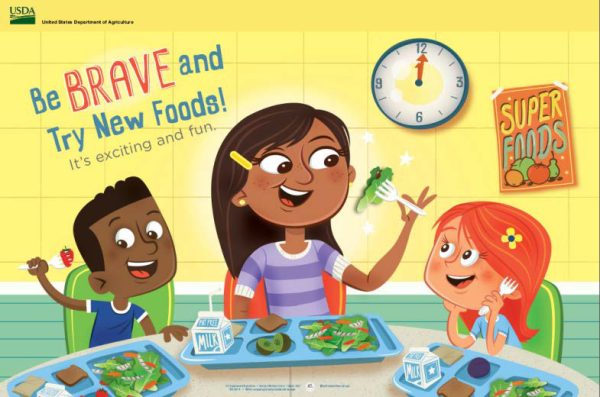 Incorporate nutrition messages into the daily schedule. Grab moments to blend in nutrition education during circle time, arts and crafts, role-playing, transition, reading, singing, or playing games. Examples of some nutrition education activities are below.
Incorporate nutrition messages into the daily schedule. Grab moments to blend in nutrition education during circle time, arts and crafts, role-playing, transition, reading, singing, or playing games. Examples of some nutrition education activities are below.
- Include healthy food models in the dramatic play area.
- Hang Team Nutrition posters or other nutrition posters around the classroom as a visual reminder for children to make healthy food choices. Or display pictures the children drew, colored, or painted of healthy foods.
- At circle time, discuss food culture and traditions. Highlight various foods to teach healthy eating. For example, cheese is used in Italian food, and it helps keep bones strong.
- Read books with positive food and nutrition messages. Some examples are below.
- Children love visitors. Ask a local registered dietitian to demonstrate healthy recipes or talk about healthy food choices. Ask a local farmer or cooperative extension professional to discuss how and where food is grown. See below for websites to help connect you to local experts.
- Find an expert in your community.
- Registered Dietitian: Academy of Nutrition and Dietetics, Find a Nutrition Expert.
- Farmer: search LocalHarvest or the National Farm to School Network.
- Cooperative Extension Professional: find a Cooperative Extension office near you.
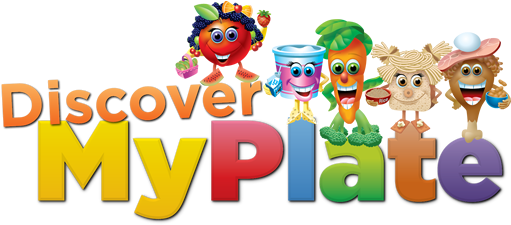 There are many ways to engage children in activities while teaching healthy habits.
There are many ways to engage children in activities while teaching healthy habits.
Discover MyPlate: Nutrition Education for Kindergarten* is a nutrition education program that promotes healthy food choices and can be adapted for children of all ages. Fun characters engage children in:
- Discovering fruits and vegetables and how they grow
- Identifying feelings of hunger and fullness
- Selecting balanced meals and healthy snacks
- Activities such as food group sorting, finding the missing food group, identifying fruits and vegetables, and counting exercises
*MyPlate has great resources and activities to teach about nutrition; however, keep in mind that MyPlate categorizes yogurt and cheese in the dairy group, while the Child and Adult Care Food Program (CACFP) meal pattern counts yogurt and cheese as a meat alternate.
 Taste-Testing: Consider holding a taste test event to get children excited about a new food or menu item. Here are some ideas to get you started:
Taste-Testing: Consider holding a taste test event to get children excited about a new food or menu item. Here are some ideas to get you started:
- Let the children select a new food or recipe to sample.
- Taste fruits and vegetables that are in season.
- Hold taste-testing events periodically throughout the year (for example, monthly, quarterly, seasonally, etc.).
- Have children taste the food and rate it based on visual appeal, smell, taste, and texture. USDA has ballots to rate foods, such as Try-Day Taste-Testing Ballot.
- After the children have selected their favorite foods, spotlight them on the menu.
- To get families involved, send a newsletter or email informing them of what foods were tried and liked. Be sure to include the recipes or preparation ideas so families can serve those foods at home. Healthy Bites (Appendix F) provides information on buying and preparing 14 different fruits and vegetables for taste testing.
Predict the Color Game
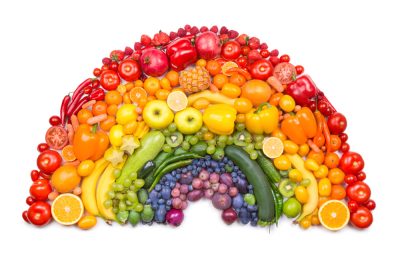
- Purchase a variety of fruits and vegetables such as melons, bananas, oranges, guava, pears, mangos, apples, kiwi, cucumbers, radishes, and avocados.
- Ask the children to guess the color inside.
- After you cut the fruits and vegetables open and reveal the color inside, let everyone have a taste.
Transition Time

While transitioning from one activity to another (for example, from circle time to lunch), ask each child to name a healthy food from one of the food groups. For example, before a child can go to the next activity, ask them to name a healthy food from the fruit group. Ask the next child to name a healthy food from the protein group. Or, you can ask each child to name a healthy food from any food group. Continue this for each child. If they need assistance, help them with hints or clues for different foods.
Discover Fruits and Veggies Activity
Place different fruits and vegetables on a table. Try to include common varieties (green beans, peppers, peaches, and plums) and less common varieties [jicama, kohlrabi, tomatillos, apricots, carambola (starfruit), and jackfruit]. Ask the children to:
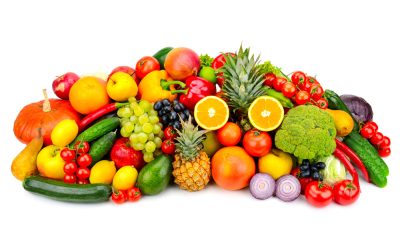
- Name each fruit or vegetable.
- Pick up each one and describe how it feels and smells.
- Sort by size, length, shape, and color.
- Discuss if they’ve tried the fruits or vegetables and whether they liked them or not.
After the activity, wash each fruit and vegetable, cut them up, and let the children taste each one.
For more ideas, check out the following resources.
- Healthy Bites (Appendix G) provides nutrition education ideas, activities, and nutrition curriculum.
- Discover MyPlate: Student Workbook is the activity book for Discover MyPlate. Lesson topics are connected to education standards for literacy, counting, sequencing, classifying objects, identifying healthy behaviors, and more.


Menus Ideas
The following menu ideas provide a variety of foods, colors, and textures that can spark conversations with the children during mealtimes and contain foods featured in the mentioned activities. Some recipes contain multiple food components which are listed in parentheses after the recipe.
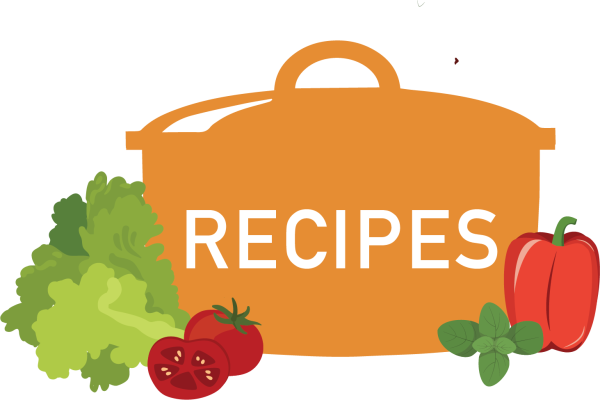
You can find the featured Menu Ideas recipes in the resources below:
- The Child Nutrition Recipe Box has USDA standardized recipes for child care centers and family child care homes.
- The Child Nutrition Recipe Box: New CACFP Lunch/Supper Recipes has standardized recipes per age group (3–5 years old and 6–18 years old) and for servings of 6, 25, and 50.
References
Academy of Nutrition and Dietetics. (n.d.). Find a nutrition expert. Eat Right. https://www.eatright.org/find-a-nutrition-expert
Gardening Know How. (2022). Extension offices near you. https://www.gardeningknowhow.com/extension-search
Institute of Child Nutrition. (2017). CARE connection planning snacks as an education activity. https://theicn.org/cacfp#9bed0998377cc131e
Institute of Child Nutrition. (2018). Nutrition 101: A taste of food and fitness. 4th ed. https://theicn.org/icn-resources-a-z/nutrition-101/
Institute of Child Nutrition, Child Nutrition Recipe Box. (n.d.). Child nutrition recipe box. https://theicn.org/cnrb/
Institute of Child Nutrition, Child Nutrition Recipe Box. (n.d.). Corn and edamame blend – USDA recipe for child care centers. https://theicn.org/cnrb/recipes-for-homes/recipes-for-homes-vegetables/corn-and-edamame-blend/
Institute of Child Nutrition, Child Nutrition Recipe Box. (n.d.). Fun fruit breakfast pizza – USDA recipe for child care centers. https://theicn.org/cnrb/recipes-for-centers-breakfast/fun-fruit-breakfast-pizza-usda-recipe-for-cacfp/
Institute of Child Nutrition, Child Nutrition Recipe Box. (n.d.). Ground turkey wraps or pinwheels for ages 3–5. https://theicn.org/cnrb/ages-3-5/age-3-5-6-servings/ground-turkey-wraps-or-pinwheels-for-ages-3-5/
Institute of Child Nutrition, Child Nutrition Recipe Box. (n.d.). New CACFP lunch/supper recipes. https://theicn.org/cnrb/2022-cacfp-recipes/
LocalHarvest. (n.d.). Local harvest. https://www.localharvest.org/
National Farm to School Network. (2021). Our network. https://www.farmtoschool.org/our-network
U.S. Department of Agriculture, Food and Nutrition Service. (2014, March 24). Team Nutrition elementary school posters. https://www.fns.usda.gov/tn/team-nutrition-elementary-school-posters
U.S. Department of Agriculture, Food and Nutrition Service. (2014, July 24). Team Nutrition popular events idea booklet. https://www.fns.usda.gov/tn/popular-events-idea-booklet
U.S. Department of Agriculture, Food and Nutrition Service. (2016, January 5). Team Nutrition MyPlate eBooks. https://www.fns.usda.gov/tn/team-nutrition-myplate-ebooks
U.S. Department of Agriculture, Food and Nutrition Service. (2016, February 11). Discover MyPlate: Emergent reader mini books. https://www.fns.usda.gov/tn/discover-myplate-emergent-reader-mini-books
U.S. Department of Agriculture, Food and Nutrition Service. (2019, April 11). Discover MyPlate: Student workbooks. https://www.fns.usda.gov/tn/discover-myplate-student-workbooks
U.S. Department of Agriculture, Food and Nutrition Service. (2019, August 26). Discover MyPlate: Nutrition education for kindergarten. https://www.fns.usda.gov/tn/discover-myplate-nutrition-education-kindergarten#anchor1
U.S. Department of Agriculture, MyPlate. (n.d.). Phrases that help and hinder. https://myplate-prod.azureedge.us/sites/default/files/2020-12/PhrasesThatHelpAndHinder.pdf
U.S. Department of Agriculture, MyPlate. (n.d.). Preschoolers. https://www.myplate.gov/life-stages/preschoolers
U.S. Department of Agriculture, Team Nutrition. (2014, July 24). Popular events idea booklet. Try-day taste testing ballot. https://fns-prod.azureedge.us/sites/default/files/tn/TNevents_appendixrepro1.pdf
Wisconsin Department of Public Instruction. (2019, May). Healthy bites: A Wisconsin guide for improving childhood nutrition. 2nd ed. https://dpi.wi.gov/sites/default/files/imce/community-nutrition/pdf/HealthyBites.pdf


